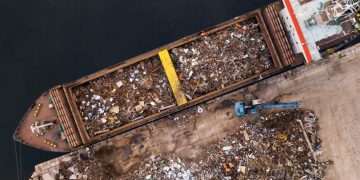On the occasion of World Maritime Day today, The European Commission’s Joint Research Centre highlights its efforts to promote indispensable shipping. Fighting fraud and mapping of shipping routes to address safety and security, such as piracy in the Indian Ocean, as well as to help gauge new economic opportunities in the Arctic have been important aspects of JRC research in the last years.EU customs investigators now can get new, powerful tools to combat fraud linked to shipping containers.
As of 1st September 2016, updated customs legislation ensures access to electronic records on the physical movements of shipping containers arriving in EU on maritime vessels. The JRC has been instrumental in the conception and adoption of this legislation, as it provided the scientific evidence on the importance for authorities of analysing these electronic records.
JRC scientists proposed techniques, developed the necessary technology, and ran long-term experiments involving hundreds of EU customs officers to validate the usefulness of using the so-called Container Status Messages (CSM) data: electronic records which describe the logistics and the routes followed by shipping containers. These new instruments will allow the EU and its Member States to better track and trace suspicious shipments and to better detect customs fraud.
Exploiting maritime Big Data
Maritime data fusion & tracking, automatic anomaly detection and situation prediction are key to improve maritime situational awareness and enhance maritime safety and security. The information obtained from satellite data and reporting from ships (or the lack of it) allows competent authorities to address border surveillance, irregular migration, and counter illegal activities at sea, linked to irregular, unregulated and unreported fishing, smuggling and pollution.
In 2015, the JRC mapped maritime global traffic routes travelled by ships carrying the flag of EU Member States, Iceland, Norway, and Overseas Territories of EU Member States. The mapping was carried out by using Long Range Identification and Tracking (LRIT) data, supplied by the respective countries. Through the analysis of historical LRIT data it was, for example, possible to provide quantitative evidence for the decline of piracy in the Indian Ocean. In the period from 2010 to 2015, the JRC ran three EU-funded projects to help capacity building of Africa’s authorities in the fight against piracy at sea.
Monitoring and analysis over longer time scales is a fundamental tool for many policy areas as data driven knowledge of maritime uses is very relevant to planning and optimising the use of maritime space for human activities at sea in a sustainable way. This applies not only to Europe, but also to remote unexploited areas such as the Arctic, where the receding ice as a consequence of climate change is opening new economic opportunities. A JRC ship monitoring study involving over 2,000 satellite images from Sentinel-1 has shown the presence of sea ice is a constant challenge for the identification of ships.
Source: europa.eu































































